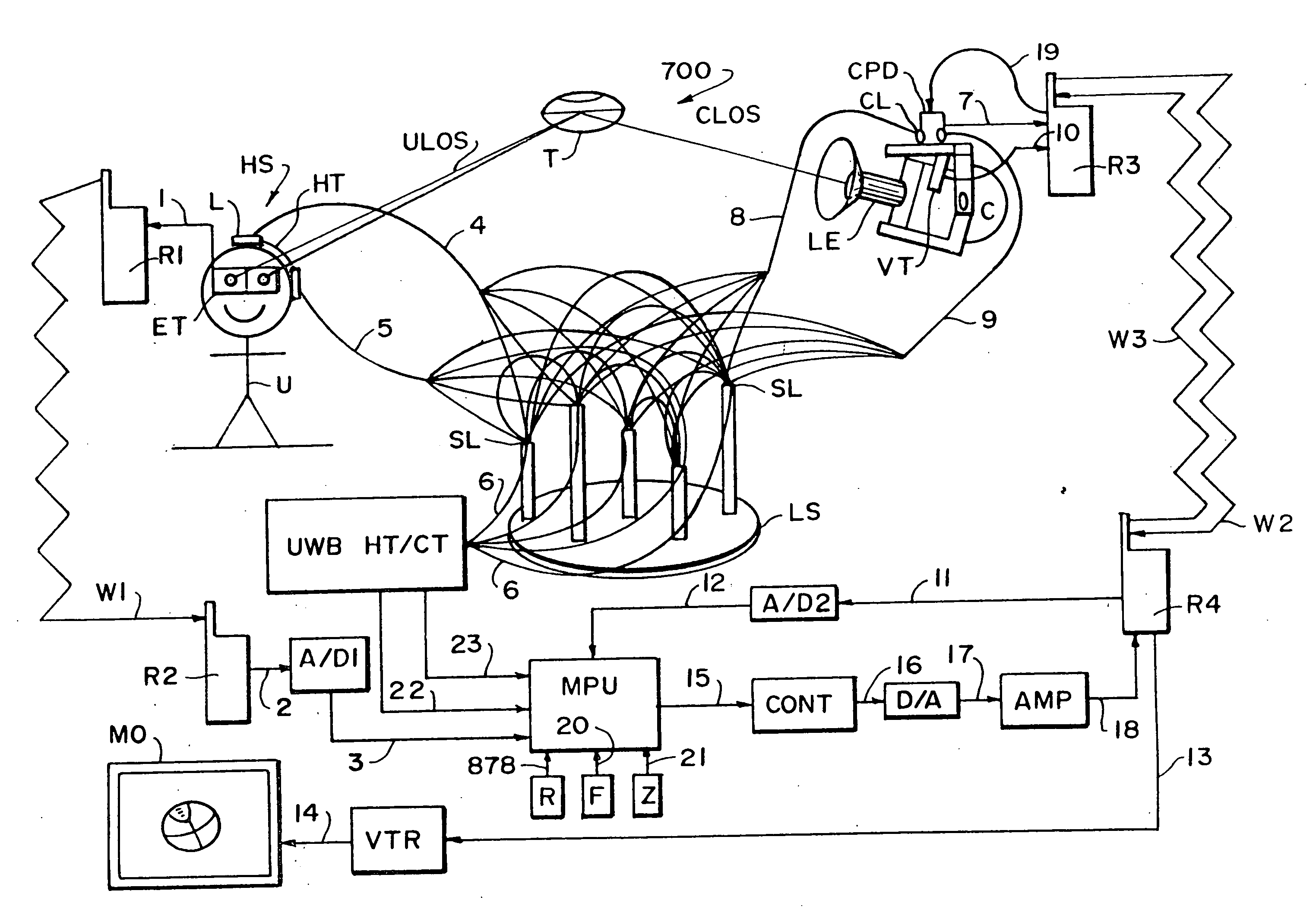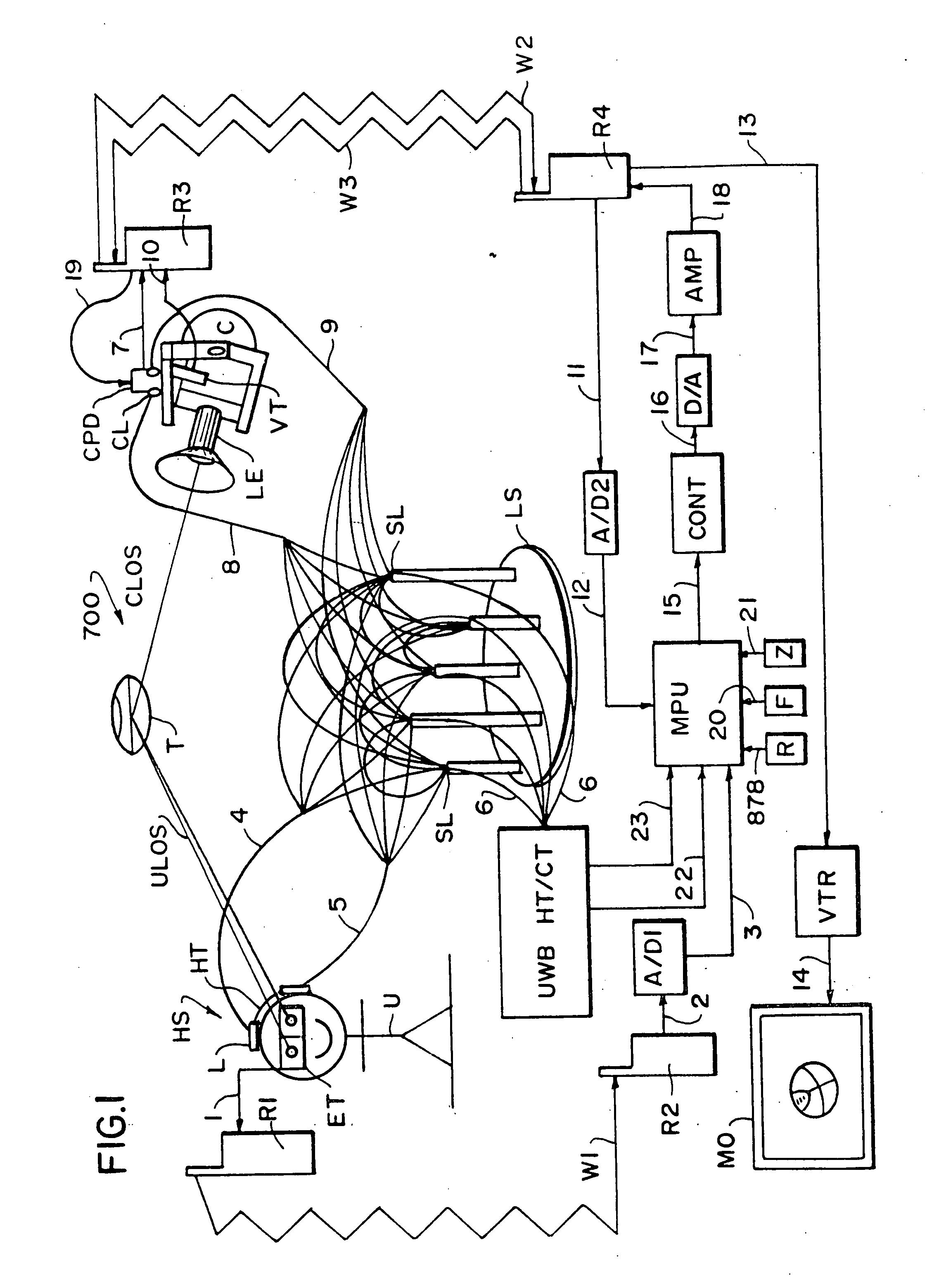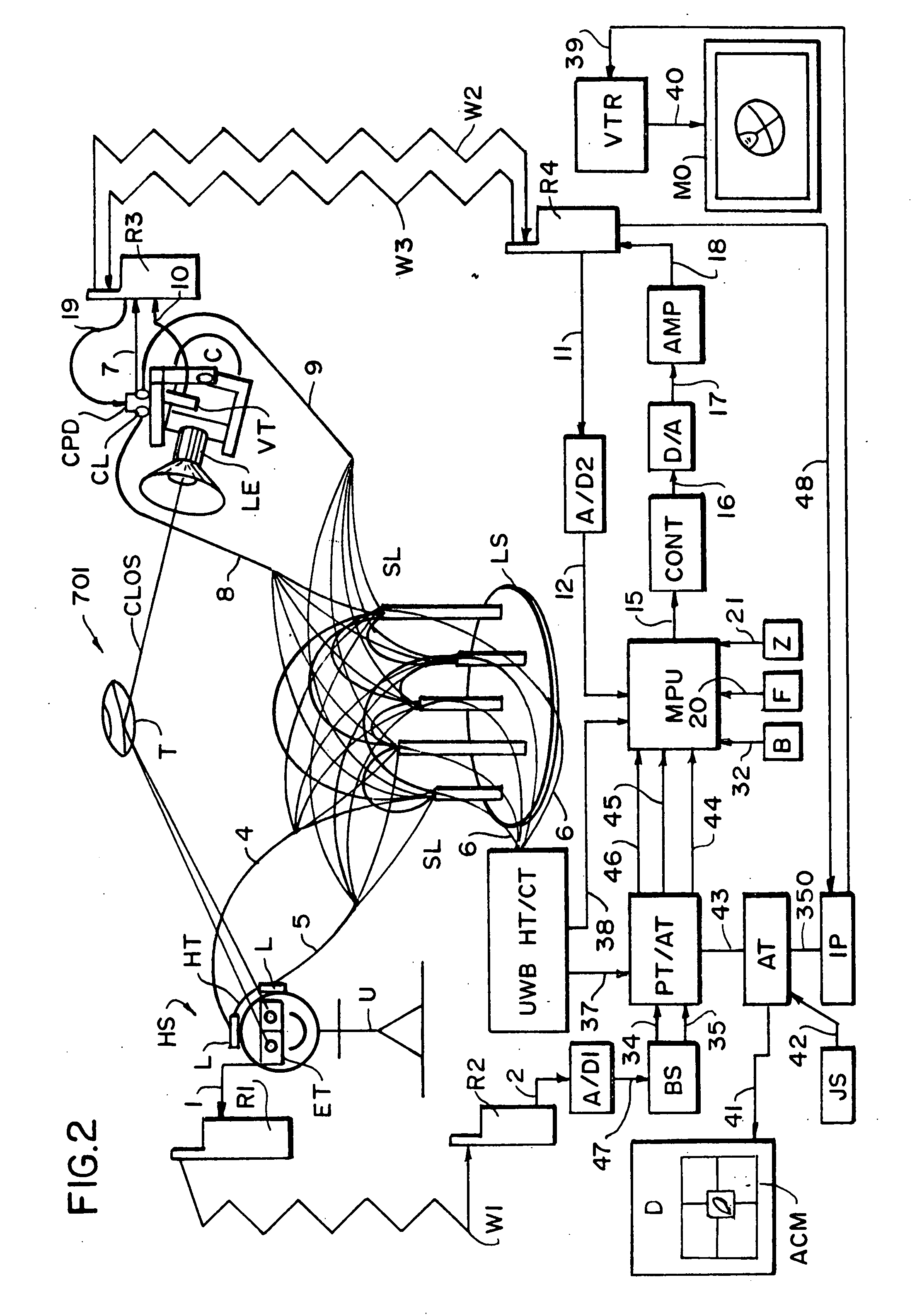Eye tracker/head tracker/camera tracker controlled camera/weapon positioner control system
a technology of head tracker and control system, which is applied in the field of system and method of tracking a target, can solve the problems of system inherently limited field of view, inability to provide parallax vision, and too far a device in an attempt to replicate human vision
- Summary
- Abstract
- Description
- Claims
- Application Information
AI Technical Summary
Benefits of technology
Problems solved by technology
Method used
Image
Examples
Embodiment Construction
[0072]Throughout the specification, similar devices and signals are identified with the same identification indicia.
[0073]This invention is directed to a tracking system of the type used by a human user. There is provided eye tracking means for tracking the dynamic orientation of the eyes of the user (i.e., the orientation of the eyes in three dimensions with respect to the head). Head tracking means are provided for tracking the dynamic orientation of the head of the user (i.e., the orientation and position of the head in three dimensions in space). At least one positioning device (e.g., a tilt and pan head, a rotary table, or the like) is also provided. There are also provided means for tracking the dynamic orientation of the positioning device (i.e., the orientation and position of the positioning device in space). The eye tracking, head tracking, and positioning device tracking means provide signals to a computer processor from which the eyes of the user directs the position dev...
PUM
 Login to View More
Login to View More Abstract
Description
Claims
Application Information
 Login to View More
Login to View More - R&D
- Intellectual Property
- Life Sciences
- Materials
- Tech Scout
- Unparalleled Data Quality
- Higher Quality Content
- 60% Fewer Hallucinations
Browse by: Latest US Patents, China's latest patents, Technical Efficacy Thesaurus, Application Domain, Technology Topic, Popular Technical Reports.
© 2025 PatSnap. All rights reserved.Legal|Privacy policy|Modern Slavery Act Transparency Statement|Sitemap|About US| Contact US: help@patsnap.com



